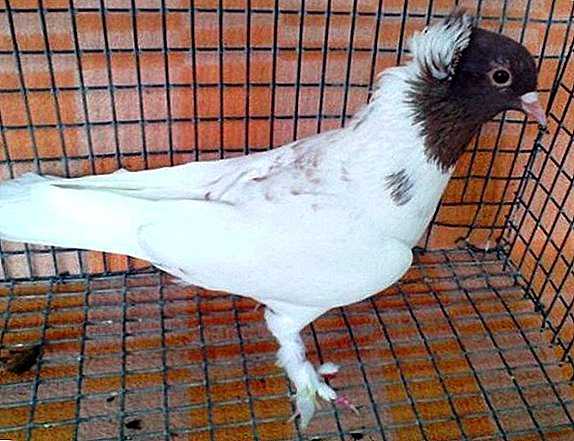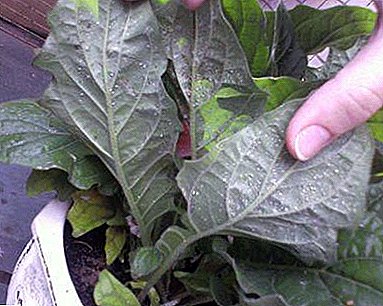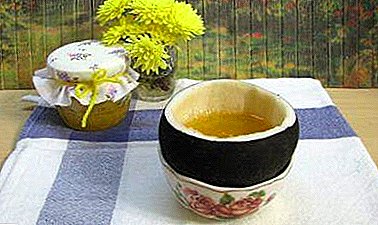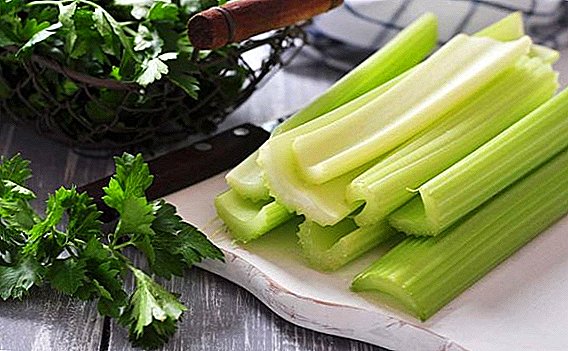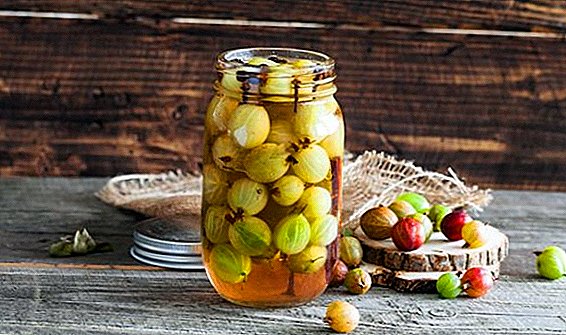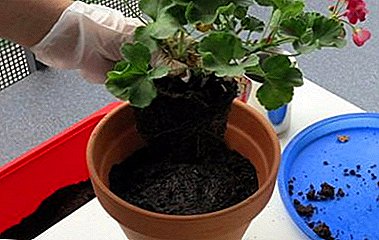
For many decades, geranium has been so frequent inhabitant of Soviet window sills that many managed to smash teeth. But the neglect of this plant is not fully justified, because today's geraniums only vaguely resemble those stunted bushes that can still be found in some institutions. Lush green, a huge number of shades of petals and patterns on the leaves have successfully won their small army of fans, which only grows from year to year.
Geranium completely unpretentious houseplant. One of the few things that can hurt her greatly is a transplant. In the article we will step by step tell you how and when you can properly transplant geranium at home after its purchase or in other situations, we will show a photo of the plant after transplanting.
When can and should transplant?
All indoor flowers periodically need to replant, when the plant grows from the former pot, and the soil loses its beneficial properties. In the case of geraniums, this operation must be carried out every 2-3 years. But there are always cases when a transplant needs to be performed out of the plan:
- if the roots become cramped in the pot (the roots are visible on the surface of the substrate and in the drainage holes);
- if the plant turns yellow and fades, the earth does not dry out completely and there is a suspicion of root rot;
- if, despite proper care, geranium does not grow and does not bloom (one of the possible reasons is improper soil);
- if at the beginning of autumn it is necessary to transfer the plant from the open ground back to the room.
Important! Without good reason, it is better not to replant the geranium, because it reacts very painfully to this procedure and takes the process of adaptation to the new soil and the pot hard.
Is it allowed to do with a flowering plant?
 Transplanting a plant during the flowering period is not recommended since he simply does not have the strength to cope with such stress successfully. It is necessary to wait for the geranium to bloom, otherwise the buds will likely disappear, the leaves will begin to turn yellow and the flower may even die.
Transplanting a plant during the flowering period is not recommended since he simply does not have the strength to cope with such stress successfully. It is necessary to wait for the geranium to bloom, otherwise the buds will likely disappear, the leaves will begin to turn yellow and the flower may even die.
If a transplant is needed urgently and there is no way to wait until the end of flowering, it should be carried out very carefully, by transshipment. All flower stalks are pre-cut. This will allow the plant to focus on restoring the root system, without spending energy on further flowering and the formation of seeds.
Suitable periods
The best time to transplant geraniums is the end of winter and the beginning of spring. (approximately from February to April). Exiting dormant plant will best endure this traumatic operation.
Is it permissible to carry out the procedure in the summer?
Can I replant in summer? During the period of active growth, you can safely carry out the procedure, as long as it doesn’t coincide with the flowering stage.
What about autumn?
With the end of the warm season, the geranium growing in the open ground must be transferred back to the house. Transplant in this case is simply necessary and the plant will transfer it without any special losses (if the procedure is performed according to all the rules).
Attention! Replanting this plant in winter is not recommended. It is very likely that it will not be able to recover and will perish.
Stages
Pot selection
 A large amount of geranium substrate is not needed, for the first planting is quite suitable pot of 10-12 cm in diameter. At each subsequent transplanting capacity should be chosen 2-3 cm more than the previous one. A pot that far exceeds the size of the root system will sooner or later lead to a waterlogging of the soil, which can cause the death of the plant.
A large amount of geranium substrate is not needed, for the first planting is quite suitable pot of 10-12 cm in diameter. At each subsequent transplanting capacity should be chosen 2-3 cm more than the previous one. A pot that far exceeds the size of the root system will sooner or later lead to a waterlogging of the soil, which can cause the death of the plant.
Geranium will feel better in a ceramic pot than in a plastic pot. Clay is able to remove from the soil excess moisture and salts, which will best affect the growth of the plant.
Substrate manufacturing
Geranium is one of the most unpretentious plants, when it comes to soil quality, it can grow in ordinary garden soil and in a universal substrate for flowering plants. There are also special mixes, here are a few compositions:
- humus, turfy land, river sand at a ratio of 2: 2: 1;
- garden soil, peat, sand in equal proportions;
- turfy ground, leafy ground, peat, sand in equal proportions.
Before transplanting a plant into a new substrate, it must be sterilized. This will help avoid various diseases and pests.
Plant preparation
There are no special ways to facilitate the geranium transplant. The main thing is to choose the right time (you can not transplant in winter and at the time of flowering). On the eve of the plant must be watered abundantly, so that the substrate is completely saturated with moisture - this will help to remove the flower from the pot. You can also use growth stimulants as an additional guarantee that the geranium will recover successfully.
Step-by-step transplanting instructions
We'll tell you how to properly transplant geranium at home and on the street.
At home
Before you begin transplanting, you must prepare a new pot, ground, drainage, sharp knife or scissors and water for irrigation. Further, the procedure is simple:
 Place a drain on the bottom of a new pot (for example, expanded clay or broken brick).
Place a drain on the bottom of a new pot (for example, expanded clay or broken brick).- Sprinkle the drainage layer with earth.
- Remove the plant from the old pot. To do this, it is best to firmly take the geranium at the base, turn it over, and then gently pull the pot up.
- Carefully inspect the root system and remove all dry or rotted areas with a knife or scissors. If the damage is not visible, it is better not to disturb the earth com.
- Place the geranium in the center of the new pot and gently sprinkle the earth in a circle without tamping.
- Abundantly water so that the soil is completely soaked with water.
In open ground
To transplant a flower to the street, it is very important to choose the moment when the temperature stabilizes and the frost will not threaten the plant. The end of spring or the beginning of summer is best suited.
The landing process proceeds as follows:
- The earth must be loosened carefully (approximately 35 cm deep).
- Dig a hole the size of which is able to fully accommodate the root system of a planted geranium.
- Lay out a layer of soil mixture at the bottom of the pit (suitable primer or one of the options described above is suitable).
- Carefully remove the plant from the pot so that the roots are not damaged and placed in the center of the pit.
- Next, you need to sprinkle it in a circle with earth, so that the roots were completely closed.
- Moderate pour water.
The geranium planted in the garden can rejoice in its flowering until the very autumn, some species can even successfully overwinter, but it is better to transfer the plant back to the apartment with a cold snap.
We offer to watch a video about transplanting geraniums in open ground:
How to get a flower home from the street?
Replanting geraniums back to the pot costs in early September. before the onset of the first cold weather.
The procedure in this case will be as follows:
- Liberally pour, so that the entire root system is saturated with moisture.
- Pour the drainage layer and a small amount of substrate into the prepared pot.
- Carefully dig the plant along with the surrounding clod of earth.
- Remove excess land and carefully examine the root system. If the roots have grown too wide, they can be cut, as well as all dry and damaged areas.
- Put the geranium with the rest of the earth in the pot and sprinkle the earth in a circle. To the top of the pot should remain at least 1 cm.
- Moderate watering, so that the soil would be saturated with moisture.
A photo
In the photo below you can see how the geranium looks after transplanting, on the street and at home in a pot:





Aftercare
Due to the fact that geranium is very sensitive to the transplant process, during this period it needs special attention. Despite the fact that in normal times, this plant feels great on the southern or southeastern windowsill under bright sunlight, it is better to put the transplanted flower in a shaded place for about a week.
Watering should be done moderately, carefully watching how the soil dries. Geraniums do not need a lot of moisture, she is accustomed to arid climate. As a result, waterlogging can be detrimental to it, especially when the plant is weakened after transplantation.
Important! Geraniums do not need increased humidity, it is absolutely not recommended to spray it, it can lead to rotting and the occurrence of diseases.
It is not necessary to fertilize the flower for 2-3 months after transplantation, all the elements necessary for growth are contained in a sufficient amount in the renewed soil. In the future, fertilizing can be done once a month, special tools for geranium, or universal fertilizers for flowering houseplants will do. When you first feed, it is important to reduce the dosage by 2-3 times to avoid damage to the roots, then apply fertilizer according to the instructions.
Our grandmothers also proved that geranium can grow and even bloom against any conditions: in simple ground, not rich in nutrients, under the scorching sun or away from them, on the balcony, where even in summer the temperature can drop below +10.
Geranium can withstand almost everything, except for an incorrectly made transplant and a constant surplus of moisture. But this does not mean that extreme conditions are habitual for this plant, like other indoor flowers, geranium needs care, and then it will reciprocate.


 Place a drain on the bottom of a new pot (for example, expanded clay or broken brick).
Place a drain on the bottom of a new pot (for example, expanded clay or broken brick).